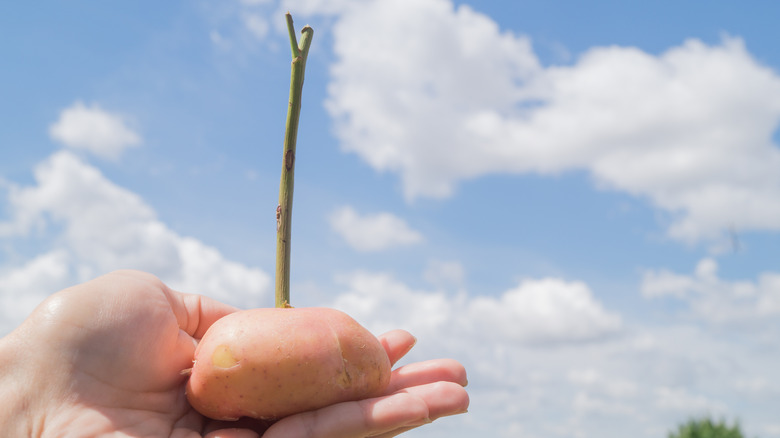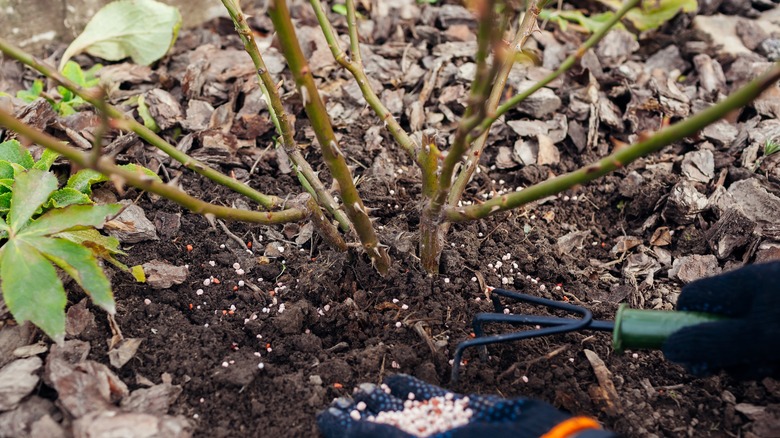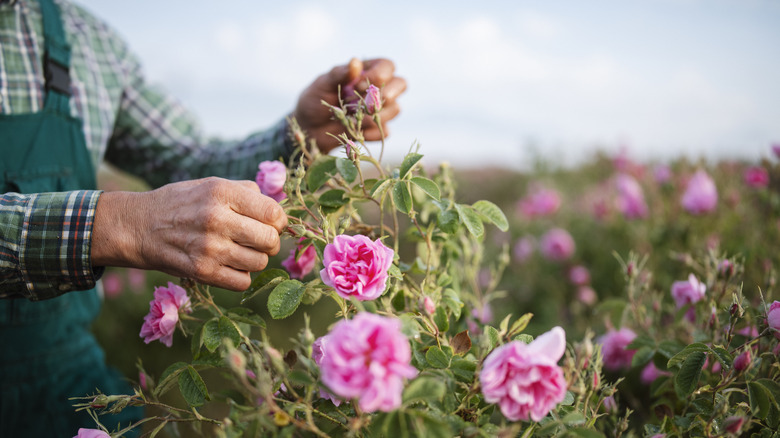Should You Try The Viral Hack Of Planting Your Rose Bush With A Potato?
Roses can be intimidating, even for experienced gardeners. Their reputation as finicky plants susceptible to fungal infections, pests, and subtle climatic changes precedes them — so much so that people will go to any length to improve growing outcomes and make sure their roses bloom at the right time. One popular albeit slightly absurd-sounding tactic you've probably come across before is that it's beneficial to plant these garden beauties with potatoes.
This may be equal parts tall tater tale and usable gardening tip, especially when rooting rose cuttings. A dry cutting won't root, and potatoes contain a lot of water (around 80% of their volume), which may help keep the cutting from drying out. A potato is also full of carbohydrates and other nutrients essential for bud growth; you can think of them as a little bundle of plant food. That's what helps new potato plants grow from seed potatoes, and the internet is full of garden guides saying it can help your rose cuttings take root, too.
Myth-busting the rose-potato partnership
But that's only one side of the story. In an article published in The Guardian in 2016, Michael Marriott (David Austin Roses) and Rosebie Morton (Real Flower Company) downplayed claims that potatoes are good growing partners for roses, stating the cuttings would do better planted in the ground. A 2019 study published in the International Journal of Innovative Research and Scientific Studies found that cuttings planted in potatoes failed to root. The researchers conducted two trials with 3-month-old rose cuttings to test the efficacy of this much-promoted method. "It was difficult to accept our null hypothesis that the use of potatoes has significant effects on sprouting and root formation," the writers concluded.
Tammy Huynh, a guest presenter on the ABC TV series "Gardening Australia," said it's "very likely the potato will cause your cutting to rot." She believes the potato hack to be nonsense. Given that potatoes sprout exceptionally easily, it's also likely the potato itself will take root, sending fresh shoots up and out of the soil at the base of your newly budding rose bush, out-competing it. Though that's not to say roses don't like having companion plants — They do! But you'll get better results from planting a lavender, Dianthus, or verbena nearby than a nutrient-hungry potato vine.
Turn scientist and test the potato method
One way to determine if the potato method works is to try it out yourself. Prepare your potatoes by drilling a small hole in them; this is where your fresh-cut rose stem will go. Snip a few stems from your favorite rose bush — this is best done at the start of summer. Aim for anywhere between 6 and 12 inches long. Try to take the cuttings from a woodier part of the plant. Remove the lower flowers and leaves, leaving just a few buds at the top of the stem. Push the end of the stem (the part stripped of leaves and flowers) into the hole in the potato, then plant the pair around 4 to 6 inches into your garden bed or a large planter. Continue to water well while you wait for the stem to root, which could take a few weeks.
If you find that the prevailing scientific opinion is right about this myth, you can skip the potato and plant the cuttings directly into a substrate like perlite and potting soil or coir and peat. Dip the end of the stems in a rooting hormone or honey to encourage growth. No matter how you grow roses, practice good horticultural hygiene: wear gardening gloves, regularly disinfect your tools, and discard or compost dead plant matter.


